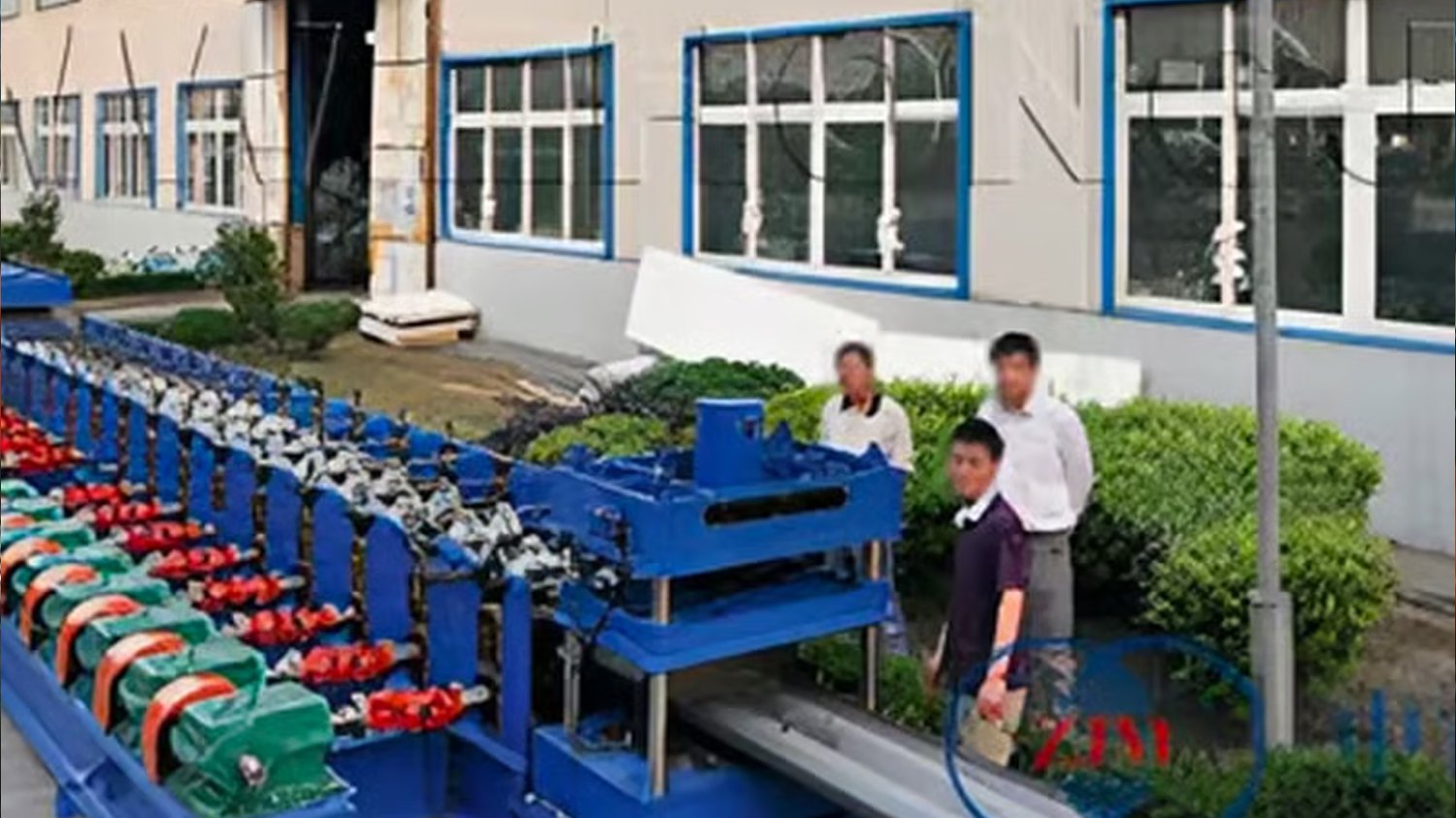A roll forming machine is a specialized piece of equipment designed to continuously bend and shape metal strips into predefined profiles. This advanced manufacturing process involves passing flat metal coils through a series of rotating dies, which incrementally shape the material to the desired cross-section. Roll forming machines are widely used for producing high-quality metal components with consistent dimensions and smooth surfaces, suitable for diverse industries including construction, automotive, and appliances.
How Roll Forming Machines Work
The operational principle behind a roll forming machine is gradual metal deformation. The flat metal sheet or coil enters the machine and progresses through multiple sets of rollers. Each roller station applies precise pressure to progressively bend the metal without compromising its structural integrity. This continuous forming method ensures a high production rate with minimal material waste, making roll forming machines an efficient choice for mass manufacturing.
Types of Roll Forming Machines
Various roll forming machines cater to different production needs. Common types include continuous roll forming machines, which operate with a constant metal feed for long profiles, and batch roll forming machines, suited for shorter, repetitive runs. Additionally, specialized machines such as Z-roll forming and U-roll forming machines produce unique profiles tailored to specific applications, enhancing customization possibilities in metal fabrication.
Materials Suitable for Roll Forming
Roll forming machines can process an array of metals including steel, aluminum, copper, and stainless steel. These materials are often supplied as coils with specific thickness ranges compatible with the machine’s rollers. The versatility of roll forming machines in handling multiple metals and thicknesses contributes to their widespread adoption across industries needing durable, lightweight, or corrosion-resistant metal profiles.
Applications of Roll Forming Machines in Industry
One of the most prominent applications of roll forming machines is in construction, where they produce roofing sheets, wall panels, and structural sections. The automotive sector also uses these machines to fabricate frame components, bumpers, and reinforcements. Additionally, roll forming machines generate parts for HVAC systems, electrical enclosures, and furniture, proving their adaptability across various manufacturing sectors.
Benefits of Using Roll Forming Machines
Roll forming machines offer several advantages including high production speed, consistent product quality, and excellent material utilization. The continuous process reduces setup time, minimizing labor costs and improving efficiency. Furthermore, the precise control over roller alignment and pressure reduces waste and results in uniform profiles, which is critical for assembly line integration and product reliability.
Technological Advancements in Roll Forming Machines
Modern roll forming machines incorporate advanced features such as computer numerical control (CNC) systems, automated coil feeding, and real-time quality monitoring. These innovations enhance precision, reduce human error, and enable the manufacture of complex profiles with tight tolerances. Integration with Industry 4.0 technologies also allows remote operation and predictive maintenance, boosting overall equipment effectiveness.
Maintenance and Longevity of Roll Forming Machines
Proper maintenance is vital for the long-term performance of roll forming machines. Regular inspection of rollers, lubrication of moving parts, and timely replacement of worn components ensure operational stability. Well-maintained roll forming machines experience fewer breakdowns, improved accuracy, and extended service life, which contribute to reduced downtime and lower maintenance costs.
Customization Capabilities in Roll Forming
Roll forming machines can be customized to suit specific production requirements. By adjusting roller configurations, tooling, and machine speed, manufacturers can produce a wide variety of profiles tailored to client specifications. Customizable features enable rapid prototyping of new designs and facilitate the seamless transition between different product lines, enhancing production flexibility.
Choosing the Right Roll Forming Machine
Selecting the appropriate roll forming machine depends on factors like material type, profile complexity, production volume, and budget constraints. Consulting with machine manufacturers and analyzing application needs can help identify the optimal machine configuration. Considerations such as automation level, footprint, and maintenance support are essential to maximize return on investment and ensure smooth production operations.
Quote Inquiry
contact us

